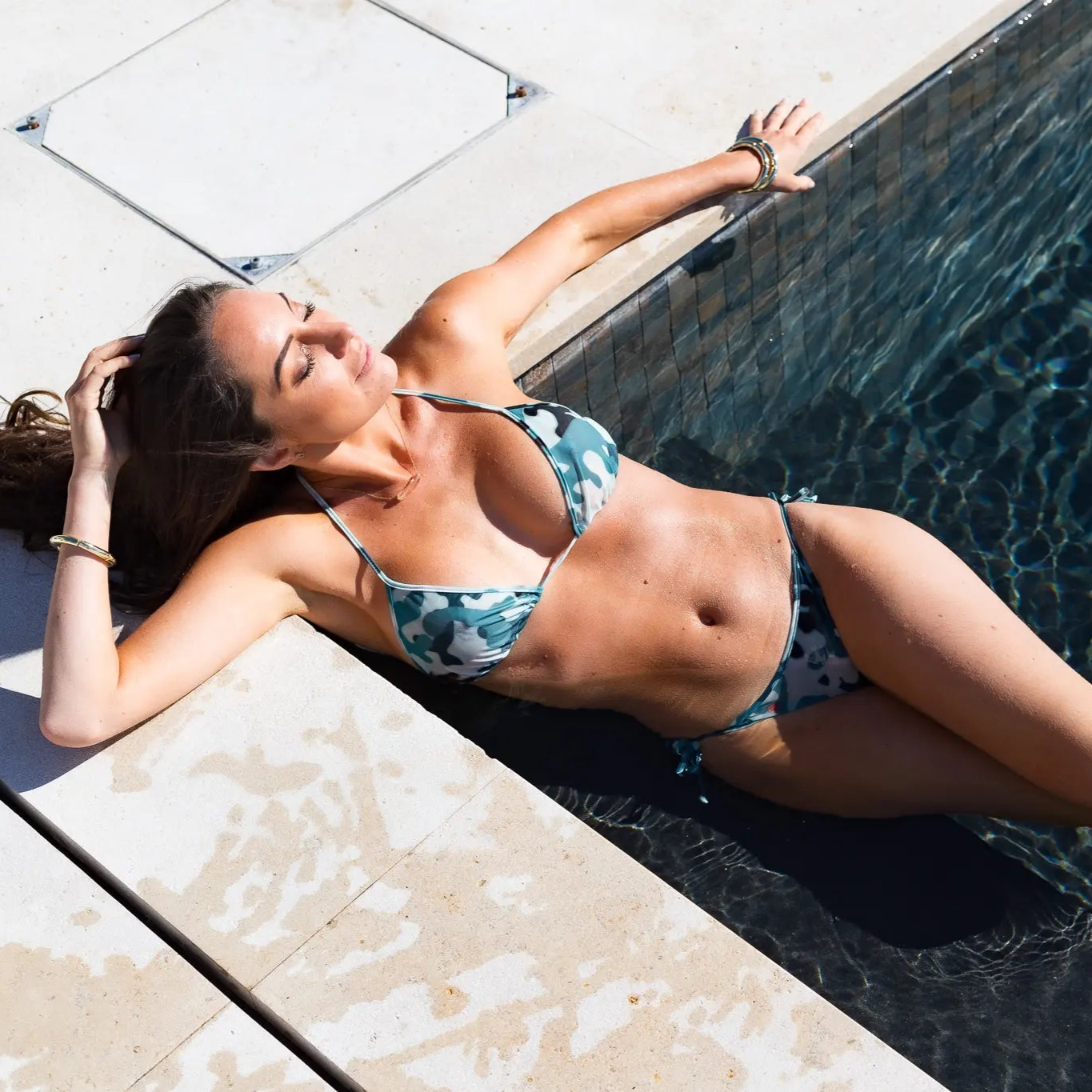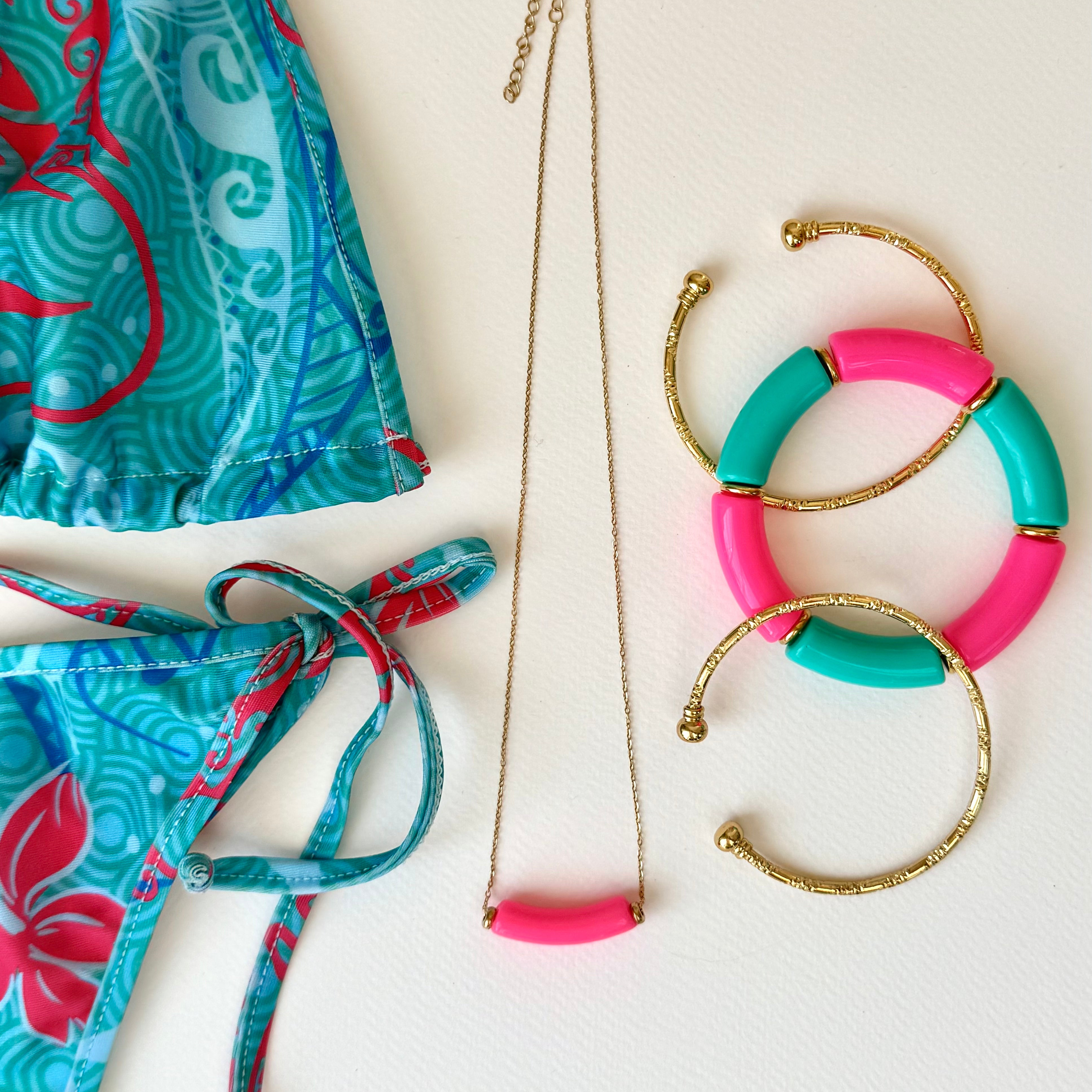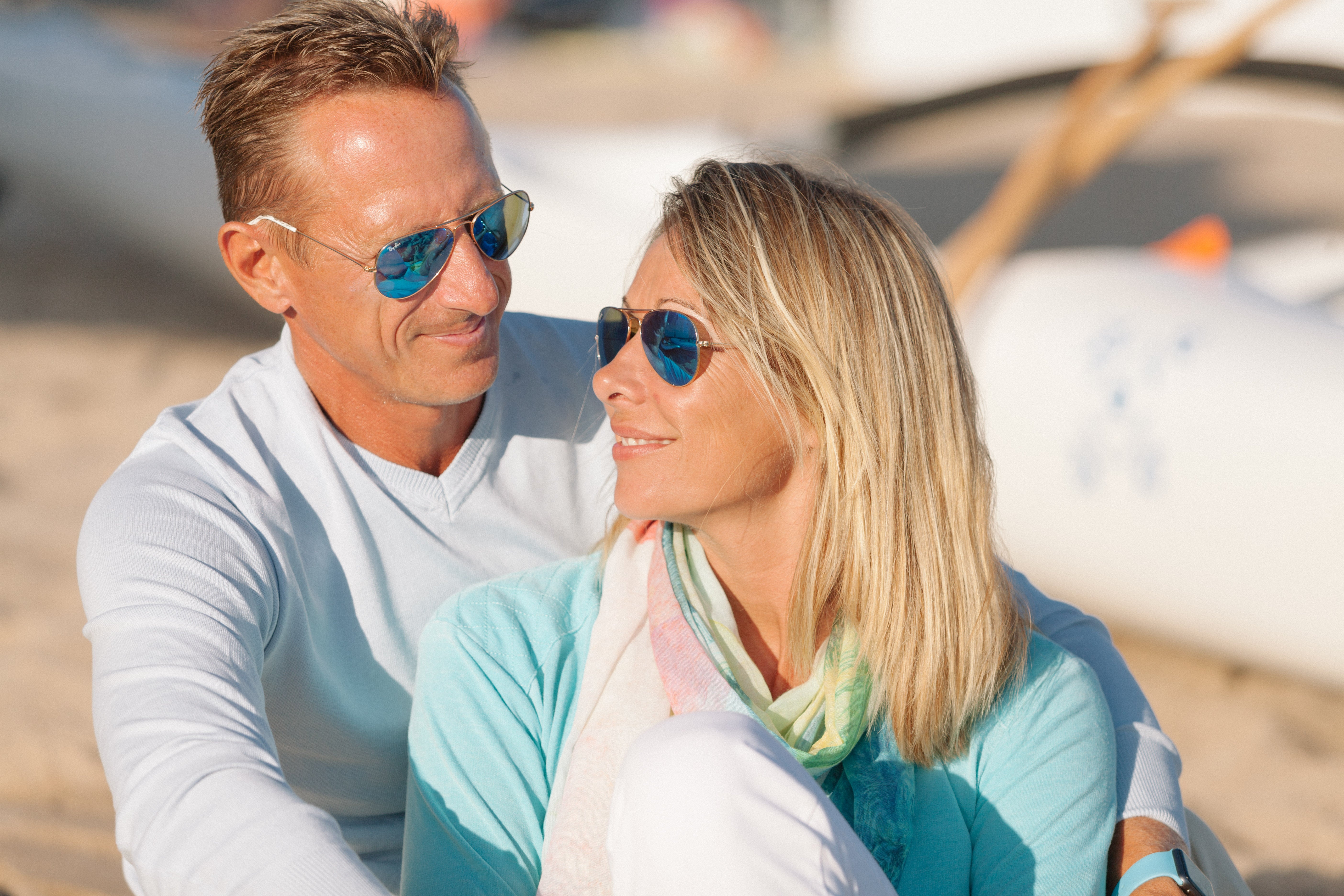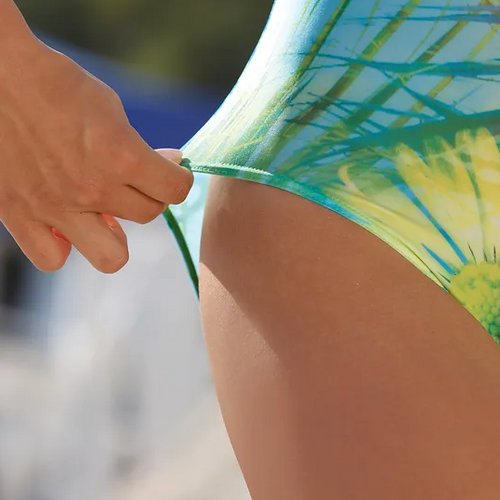We have been hearing for many years about swimsuits or clothing that would allow you to tan through the fabric. The market has never really exploded, so what is it really? Fantasy or reality?
Who hasn't dreamed of a fully tanned body without resorting to artificial UV rays or naturism?
The promise of the trans-tanning fabric is to say goodbye to unsightly marks and get a tan without swimsuit marks. But if it were that simple, why don't all brands offer it, and why is this type of product rarely offered by designers?

What technical solutions do fabric manufacturers offer to achieve the trans-tanning effect?
There are two types of fabrics:
1/ Those with very open mesh which let the sun pass between the threads without providing protection.
This type of fabric is more like a net than a real technical development. Since skin protection is not guaranteed, it is necessary to put sunscreen under the textile. These areas are by definition much lighter, the risk of burning is significant and it is necessary to constantly monitor the absence of redness especially during the first exposures. In addition, sunscreen is the enemy of lycra and therefore reduces the lifespan of your beautiful swimsuit.
Being very transparent may put off some people who don't want to reveal their anatomy to the whole beach.
This type of textile cannot really be described as tan-transparent, it is only non-filtering.
2/ Those with a very tight mesh which, through their weaving and the material used, select the frequencies of UV A and B rays to allow only the least harmful rays to pass through and only those useful for the tanning mechanism: melanogenesis
This type of fabric is generally patented and much more expensive. It provides sun protection with an index of around 10 SPF and above all prevents the skin from burning by filtering UV B rays. It is not necessary to put sunscreen under the swimsuit.
Not being transparent, this type of fabric is better accepted by most people.

Example of a transtanning fabric that selects UV A & B
We notice in the photo that the fabric is very light while being perfectly opaque.
The use of this type of product is mainly swimwear, but it is also found in sportswear such as cycling, athletics, and any sport requiring close-fitting clothing.
How do you get an even tan with this type of patented textile when some areas are covered and others are not?
The patented textile acts as a sunscreen of index 10, so it is not necessary to apply cream underneath. On the other hand, it is IMPERATIVE to protect the uncovered areas preferably with an index 30 in dry oil, in order to protect your skin and thus balance the tan to be as uniform as possible. It is necessary to regularly move the strings, belts and seams because being doubled the sun's rays do not pass through.
What does a sun protection index (SPF or SFP) correspond to?
The protection index (IP) or Sun Protection Factor (SPF) indicates the level of protection against UVB rays. It is therefore important to refer to it to choose a product adapted to your skin type, as well as to the conditions of exposure to the sun.
This protection is expressed in the form of a numerical index (6, 10, 15, 20, 30, 40, 50 and 50+), which must be displayed on all products. The higher it is, the stronger the sun protection. This index actually reflects the time during which it is possible to expose yourself before getting sunburned.
The calculation is simple: you need to take the number of minutes after which the skin generally gets sunburned without sun protection (15 minutes, for example), and multiply this number by the SPF. With an SPF 10, for example, you get 15 minutes x SPF10 = 150 minutes. In this case, the sunburn will therefore appear after about 150 minutes (2.5 hours).
Please note that these are theoretical calculations and, in reality, other factors come into play, such as your skin phototype and the intensity of UV rays where you are. (source BIAFINE)
What is the risk of breast cancer?
According to the ARC, there is no established link between sun exposure and breast cancer.
https://www.fondation-arc.org/cancer/cancer-sein
A diet rich in vitamin D combined with regular exposure to the sun would even reduce the risk of developing breast cancer. See the study by clicking on the link below:
https://www.e3n.fr/alimentation-et-soleil-quel-lien-avec-le-cancer-du-sein .
On the other hand, too prolonged and too frequent exposure can damage the skin and even cause the appearance of skin cancer.
In Summary
To our knowledge there is only one manufacturer of patented tan-through fabric that supplies a number of brands around the world that either have a range in their collection or only offer products of this type.
Although this market is relatively well-known in the world and in Europe, it nevertheless remains confidential in France, while the swimwear market has grown by 5.5% since 2015 and it was not until 2022 that the French brand BIKUNU Côte d'Azur launched its first 100% transtanning collection.
link to the site: www.bikunu.fr
Interest in this type of product exists both for swimwear and for beach textiles with shirts, Bermuda shorts, polo shirts, etc.
#bikini #transtan #swimsuit #womenswimsuit #menswimsuit #onepieceswimsuit #tanthrough #womensbikini #transtanningswimsuit #tanningswimsuit #bikunu #cotedazurfrance #tanning #suncream #selftanning #madeinfrance #oekotex





